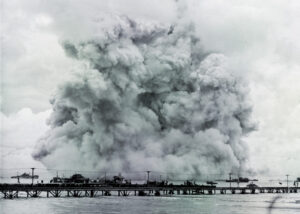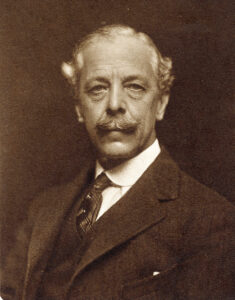THE USS ESSEX AND THE BIRTH OF THE AMERICAN NAVY, by Frances Diane Robotti and James Vescovi, Adams Media Corporation, 302 pages, $22.95.
The U.S. Navy of 200 years ago was far different from the complex, bureaucratic one of today. The co-authors illuminate the contrast by means of the 850-ton, 32-gun frigate USS Essex , the focal point of this book, which is really a primer of U.S. naval history from the origin of the Navy Department in 1798 to the conclusion of the War of 1812.
The citizens of Salem, Massachusetts (in Essex County), raised the Essex’s $74,000 cost through public subscription, essentially a low-interest loan to the government. Launched in 1799, the new frigate was something of a junior partner in a navy built around the more famous Constitution and Constellation. Even so, she had several notable distinctions, particularly in being the first U.S. warship to round both Cape Horn and the Cape of Good Hope.
During her heyday, the most prominent officers of the young navy commanded the frigate. The navy’s first admiral, David Farragut, served aboard her as a midshipman. In her early service she protected merchant ship convoys as they sought to avoid the Barbary pirates of North Africa. The Essex’s pioneering cruise into the Pacific brought her great success against British whalers, but it was also her downfall. In March 1814, off Valparaíso, Chile, she lost a dramatic battle against two ships of the Royal Navy, HMS Phoebe and HMS Cherub.
Robotti and Vescovi have made little use of primary sources for their book, instead deriving this useful account from dozens of published works and offering it as a layman’s guide to the era. Along the way they explain such details as ship construction, types of warships, selection of officers and crews, personalities of top-ranking officers, logistic support, and the way the fledgling U.S. Navy served the national interests.
Paul Stillwell is director of the history division of the U.S. Naval Institute in Annapolis, Maryland.




